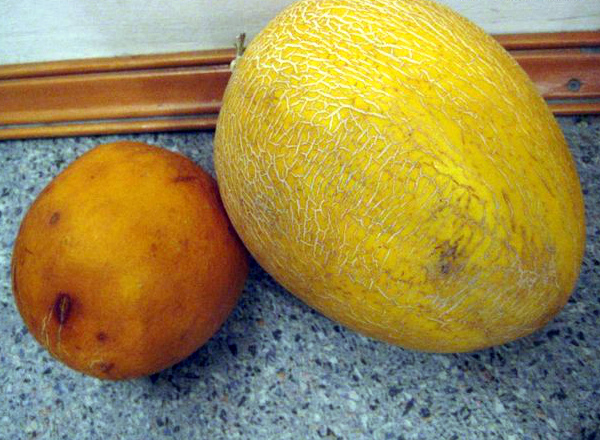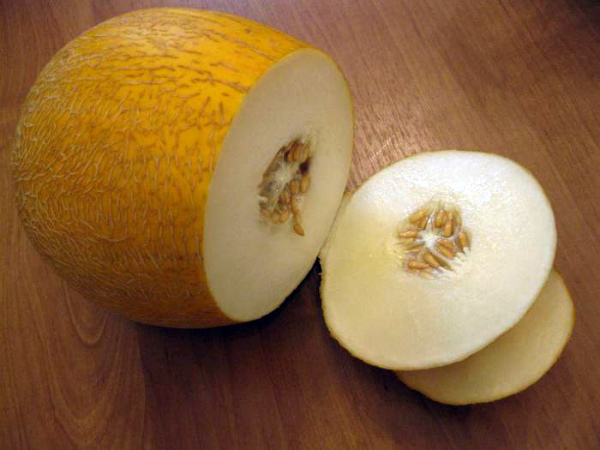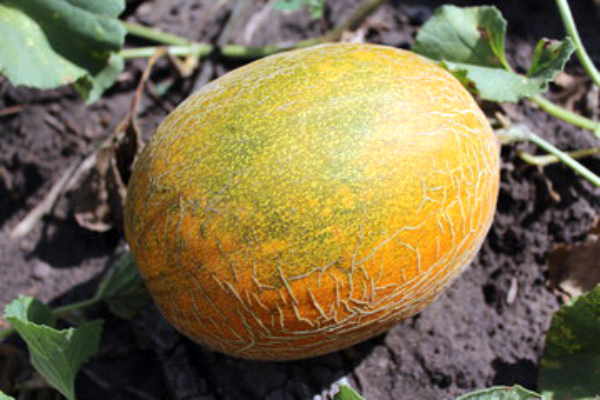Melon Turkmen: cultivation and care of the variety
As you know, all types of melons of this truly wonderful and healthy product are united by a love for heat, dryness and a dislike for a lot of water. It is not surprising that it is in the southern regions and in the East that the most delicious, sweet, literally ideal representatives of culture grow.
Content
Description of the variety
"Turkmenskaya" is a generalized term used by modern gardeners and melon growers, as they say "Uzbek", thus combining several varieties characteristic of this region.
In fact, there are over 400 varieties that Asia, and Turkmenistan in particular, offers us. And they are divided into four groups, which consist of representatives, differing in the rate of ripening and the periods when the harvest takes place:
- The first group contains early maturing varieties that reach maturity in a maximum of 70 days. These include Mazy, Ternek, Zamy. They are characterized by juiciness and tenderness of the pulp, medium sweetness (up to 15% sugar) and pronounced aroma.
- The second group includes mid-season varieties that ripen from 75 to 100 days. Such melons are dense, crispy and juicy, slightly sweeter than the representatives of the first group. The pulp of these varieties contains up to 18% sugar.
- The third group is also mid-season varieties, the beginning of ripening of which falls on the 95th day. These varieties are characterized by a viscous, juicy and very sweet pulp and have a long shelf life. It is these melons that are used for cooking melon honey, dried and preserved.
- The most late-ripening varieties are of the fourth group. They ripen up to 120 days and grow incredibly large. Of course, they are not as juicy and aromatic as the earlier melons. The amount of sugar in the representatives of this group reaches a maximum of 16%, the aroma is much less pronounced than in summer and early autumn fruits. But one cannot but appreciate these varieties at their true worth. It is they that become a juicy alternative to summer delicacies in the winter cold.
It is to the fourth group that the Turkmen woman belongs. It rarely grows above average size, tolerates low temperatures well. And when ripe by mid-autumn, it pleases with its sweetness and delicate, fresh scent. Her pumpkins are medium in size, the rind is deep green with a net of coarse fibers. When the melon ripens, the net deepens, as if growing into a pumpkin, and turns dark brown.
Beneficial features
Turkmen woman - melon is not only tasty, but also extremely healthy. It contains a huge amount of useful substances: vitamins C, B, E, B6, B1, B2, B15, PP, a large amount of phosphorus, iron, copper, magnesium, carbohydrates, proteins and a number of acids useful for organisms, for example, citric and malic acids.
Since then, as people have mastered and cultivated melon, it has been used to treat blood vessels and blood, the digestive system and kidneys, used as a diuretic. Among other things, the substances contained in the pulp of pumpkin have a beneficial effect on the condition of hair and skin, strengthens the immune system, supports the functioning of the nervous system and cleanses the intestines.Traditional medicine suggests applying melon pulp to bruises, bruises and abscesses, treating coughs and making compresses for bronchitis.
Growing features
Despite the name and origin, Turkmenka perfectly withstands low temperatures, which makes it suitable for growing not only in the sultry southern regions, but also in the harsh climate of Siberia. Due to the fact that melons ripen in mid-September, seedlings are planted, not seeds, in open ground.
In cold regions, after planting, the beds are covered with a film to protect them from sudden frosts and keep moisture in the garden longer. It is quite convenient to use collapsible greenhouses, because after the appearance of 2-3 true leaves, shelter is no longer needed.
In the process of growing fruits, they are often tied up in order to protect the fruits from damage, but in this case it is best to put something under the pumpkins so that they do not fall from the bush.
Also, after the appearance of the fourth or fifth true leaf, the melon must be correctly pinned and shaped. For this, the apical bud is removed to stimulate the development of the lateral stems. The main stem is usually tied to a trellis or put on a garden net, and the lateral processes are regularly pinched if ovaries appear on them, or completely removed if ovaries do not appear. Slices must be treated with charcoal or lime to prevent infections from getting inside the plant.
Care
As is the case with many other varieties, the galaxy of Turkmen melons needs careful care, which primarily concerns watering. Try to build such a watering schedule so that the land is wetted for a long time, but water does not accumulate in the holes or aisles.
Stagnant water is one of the main reasons for the decrease in the quantity and quality of fruits that form on the bush.
Of course, one cannot do without loosening the soil, but this must be done very carefully so as not to damage the roots. But you do not need to delay weeding with weeding, since it is better to remove them in the early stages, before they drop the seeds and hide your melons in the thickets.
Good vegetation and fruiting of the melon will be provided by fertilizing with a mineral and organic composition. So, for example, before flowering, mullein, nitrogen and potassium must be added to the ground in order to ensure the stable and active development of the plant. During the period of fruit formation and fruiting, you need to add saltpeter, infusion of mullein or bird droppings, as well as potassium and calcium. You can also feed with yeast solution every one and a half weeks.
It will not be superfluous to carry out preventive treatment of the site with fungicides and insecticides before planting and during the growth of melons. You can use the drugs "Ridomil Gold" and "Quadris 250".
Video "Melon from the Garden"
See what a beautiful and delicious melon has grown in the garden.





